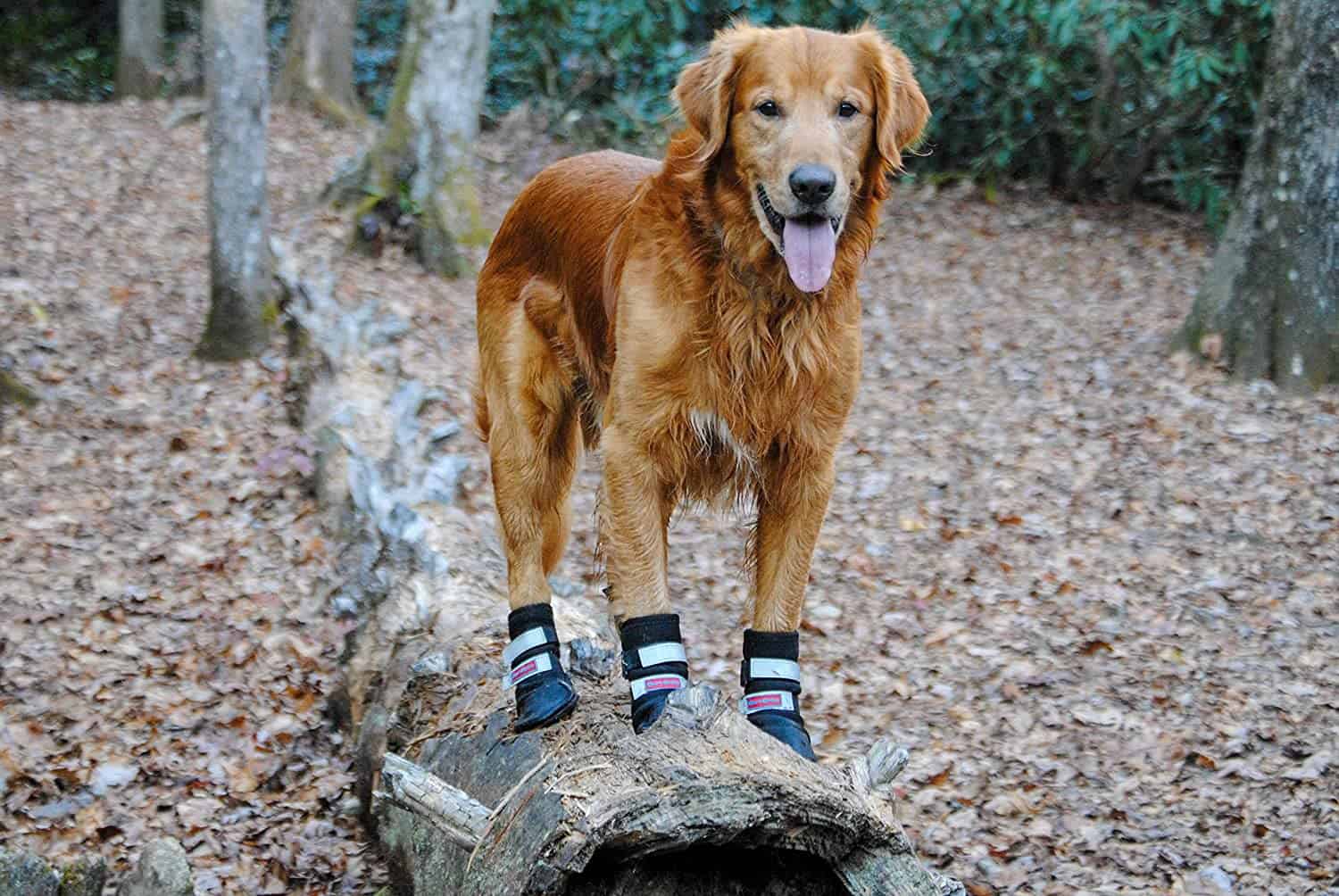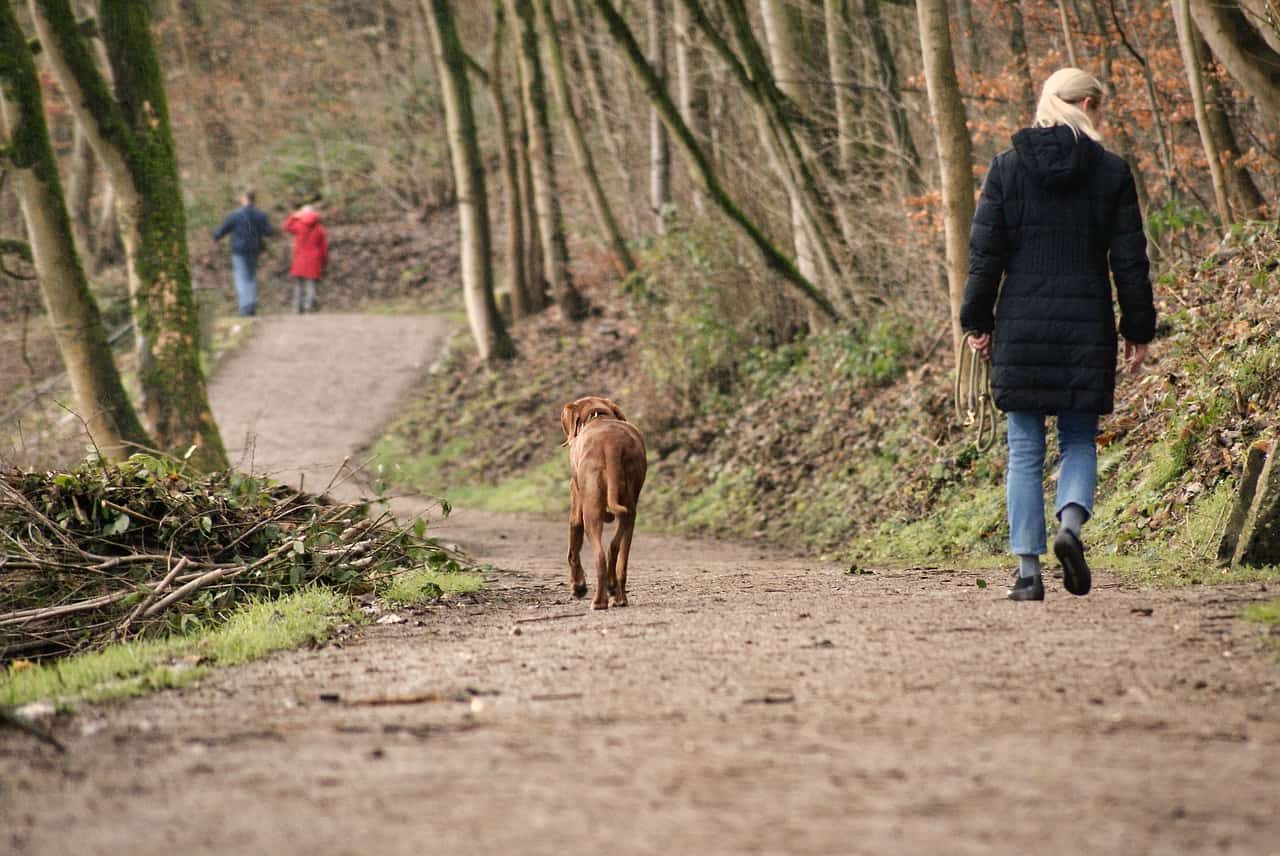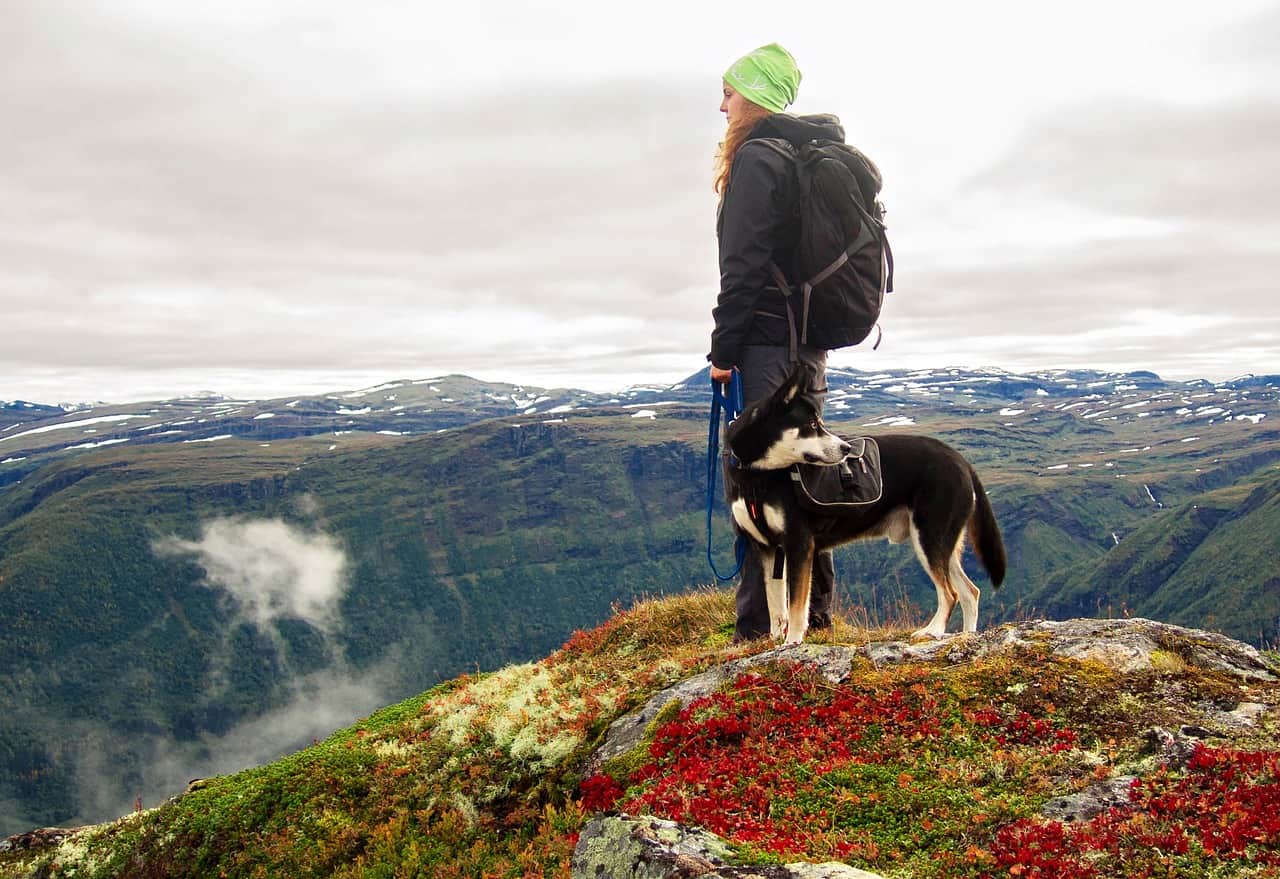Hitting the backcountry and trails with your canine friend is an excellent way to explore the hinterland and all it offers. However, you want to get your hiking boots on to prevent hurting your foot. But what about dogs; don’t they need their paws protected? Doesn’t your dog need boots for hiking too? Maybe you’ve considered getting her some and are wondering if they help. I was curious also and decided to find out.
Do dogs need boots for hiking?
Obviously, yes, your dog paws need to be protected to prevent injuries, just as you may save your feet. And thankfully, there are boots designed for dogs for this purpose—to protect the soft paws of your canine companion from injuries.
If you’d like to learn more about dog boots and hiking, I recommend you to continue reading as I’ve put together more detailed information for you.
Why Your Dog Needs Boots for Hiking: More Facts
The truth is, your dog needs the same protection that you also need when you are out on the trail. Your canine friend needs to avoid dangers like stinging insects, sand burrs, rain, and even chemicals like pesticides. Thorns, rough terrains, and rocks can do a lot of harm to your pet’s paws. Boots also give your dog’s paws better traction, just as it does for humans.
Moreover, there are specific surfaces you cannot walk barefoot on, and neither can your dog, such as hot concrete, rock, sand, and woods.
When you fit your pup with the right set of dog boots, you can have fun exploring the wild, irrespective of the time of the year. You won’t have to deal with pad burns when hiking in hot weather with your dog. And your pet’s paws will not slip on wet surfaces or icy roads.
How Can My Pet’s Boots Stay Put?
Perhaps that’s your concern, too; you’re not alone. Most dog owners are curious or somewhat worried about how boots will stay put or if their pets can cope with the shoes. However, that won’t be a problem if you can select the right boots and size.
Every dog boot manufacturer follows different size charts. Therefore, it is essential to correctly measure your canine friend’s paws according to their instructions. Likewise, you need to confirm the boot’s materials and design to ensure they are suited for the activity you have in mind, hiking.
Related: Best Dog Crate For Car Backseat.
Benefits of Getting Hiking Boots for Your Dog
Protection
Dogs that spend lots of time indoors are known to have soft pads compared to dogs used to stay outdoors. The latter’s pads can become rigid over time as the dog walks on the rough ground from time to time.
There is nothing wrong with your pup having softer pads; the problem is that your dog may be prone to injuries. But if your pup wears extra padding in the form of dog boots, they will be protected from bushes, thorns, hot rocks, and uneven ground or terrain.
Get high-quality dog shoes with durable materials; they will protect your pet’s paws.
Stability
Stability is one reason your pet needs boots. It is essential, especially for aging dogs.
The older a dog gets, the less stable they become. Dog boots will provide that stability and additional support your dog needs to walk around. Although it may happen somewhat slowly, dog boots’ use is an immense benefit that your tail-wagger will thank you for it.
Traction
Every trail or mountain has different obstacles that you can overcome if you put your mind to them. One such block is the terrain.
One notable thing about hiking boots—for dogs and humans alike—is that they significantly add an incredible amount of traction while you hike. Dog boots are known to add much better traction against uneven ground, hot pavement, ice, snow, rocks, and water.
So when you are relatively up around any icy path, sharp rocks, or uneven terrain, you will be thankful for those boots. And your canine friend will also be grateful for those tough-looking dog boots.
Issues You May Experience with Dog Boots
No matter how tough your dog’s paws are, they are still prone to injuries and will need protection. Here are some challenges you may experience with dog boots.
1- Finding the Right Size for Your Pet
The first step to getting dog boots is figuring out sizes and taking measurements. If dog boots must work, they must not be loose and need to be snug.
Here’s how you measure your dog for shoes: Place your dog’s paw on a piece of paper and mark the widest part of the hoof. The distance between the two marked points is the right size for the shoes.
The following is a list of several standard sizes used for dog boots:
- XX-Small: 2 inches(5 cm)
- X-Small: 2.25 inches(5.7 cm)
- Small: 2.50 inches(6.5 cm)
- Medium: 2.75 inches(7 cm)
- Large: 3 inches(7.6 cm)
- X-Large: 3.25 inches(8.25 cm)
You can follow these sizes when taking measurements for your dog’s boots.
2- My Dog Doesn’t Like Boots; What to do?
Most dogs don’t enjoy wearing boots, or at least not right from the start. You may have to be very patient, as it may take time for your pet to accept wearing boots. It helps to let your dog sniff the shoes first to get familiar with them. Try one at a time, and don’t forget to give her treats as rewards for wearing the shoes. It helps to walk inside the house before attempting to go outside. A good trick is to leave a trail of treats in the room or hallway to distract her from the feel of wearing the shoes.
3- Takes a Long Time to Adjust
If your dog has never worn dog shoes before, adjusting to wearing boots will take time.
It would be best if you considered creating a well-structured routine of using dog boots for at least 30 minutes per day throughout the first week. Then increase the time slowly without overwhelming your pup with this change.
4- When Paws Don’t Toughen Up
Over time, the paws of a dog will form calluses and may toughen due to harsher exposure. This process should not happen too quickly, or it could result in injury.
And one of the most efficient ways to slow down this process or even stop it entirely—is via dog boots.
Conclusion
By now, you already know that your dog needs boots for hiking, if not for other benefits, at least prevention from injuries. As you have read, your dog may not want to wear the boot initially. But you have to take your time and be patient to get it accustomed to footwear.
When buying dog boots, make sure to get the breathable ones since dogs only sweat in areas not covered with fur. The right size is essential. Use the measurement chart to ensure you get the best size for your dog and make the pre-boot wearing process easy.
Recent Posts
As a dog owner, you want to ensure that you take proper care of your furry companion. A common question that many pet owners have is, "Can I walk my dog 30 minutes after eating?" Understanding the...
Have you ever considered getting an elevated dog bed for your furry friend, but wondered if it's worth the investment? If so, you're not alone. As dog owners, we all want to provide the best care for...




